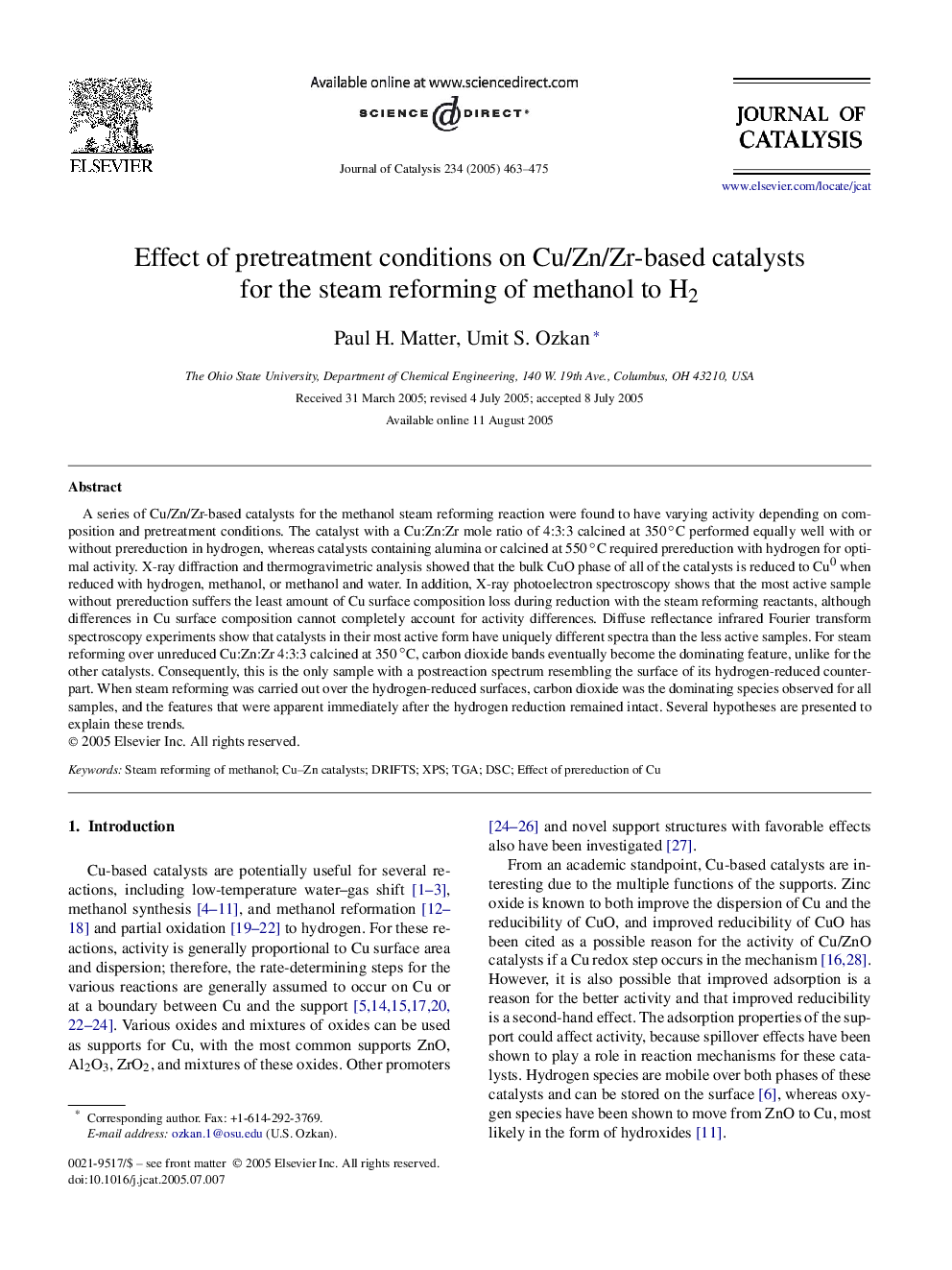| Article ID | Journal | Published Year | Pages | File Type |
|---|---|---|---|---|
| 10244677 | Journal of Catalysis | 2005 | 13 Pages |
Abstract
A series of Cu/Zn/Zr-based catalysts for the methanol steam reforming reaction were found to have varying activity depending on composition and pretreatment conditions. The catalyst with a Cu:Zn:Zr mole ratio of 4:3:3 calcined at 350â°C performed equally well with or without prereduction in hydrogen, whereas catalysts containing alumina or calcined at 550â°C required prereduction with hydrogen for optimal activity. X-ray diffraction and thermogravimetric analysis showed that the bulk CuO phase of all of the catalysts is reduced to Cu0 when reduced with hydrogen, methanol, or methanol and water. In addition, X-ray photoelectron spectroscopy shows that the most active sample without prereduction suffers the least amount of Cu surface composition loss during reduction with the steam reforming reactants, although differences in Cu surface composition cannot completely account for activity differences. Diffuse reflectance infrared Fourier transform spectroscopy experiments show that catalysts in their most active form have uniquely different spectra than the less active samples. For steam reforming over unreduced Cu:Zn:Zr 4:3:3 calcined at 350â°C, carbon dioxide bands eventually become the dominating feature, unlike for the other catalysts. Consequently, this is the only sample with a postreaction spectrum resembling the surface of its hydrogen-reduced counterpart. When steam reforming was carried out over the hydrogen-reduced surfaces, carbon dioxide was the dominating species observed for all samples, and the features that were apparent immediately after the hydrogen reduction remained intact. Several hypotheses are presented to explain these trends.
Related Topics
Physical Sciences and Engineering
Chemical Engineering
Catalysis
Authors
Paul H. Matter, Umit S. Ozkan,
